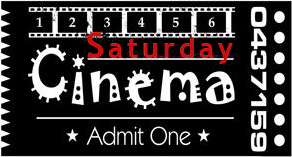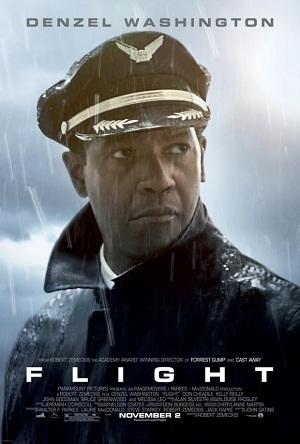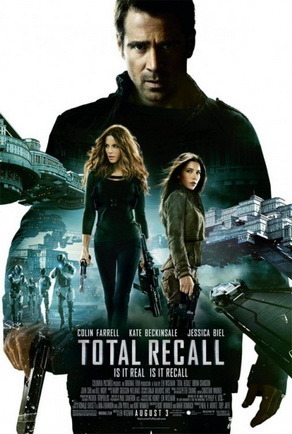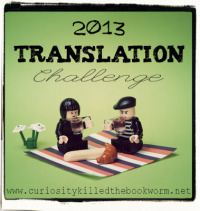Katherine Nabity's Blog, page 230
May 28, 2013
Hiding the Elephant
Harry Houdini was the greatest escape artist in history, yet known to his contemporaries as a terrible stage magician. Nevertheless, in 1917 he performed a single illusion that has been hotly debated ever since: Under the bright spotlights of New York’s Theatre Hippodrome, he made a live elephant disappear. Where did he learn this amazing trick and how did it work? The answers lie in magic expert Jim Steinmeyer’s chronicle of illusionary innovation, backstage chicanery and espionage, elevated showmanship, and keen competition within the world of magicians. Steinmeyer has captured the cultural history of magic during its “Golden Age” in America and abroad. Readers will learn the secrets and life stories of the fascinating personalities behind optical marvels such as floating ghosts appearing onstage and interacting with live actors, disembodied heads, and vanishing ladies. The people and events surrounding each step toward “The Vanishing Elephant” reveal how simple principles, mixed with ingenious psychology, can entertain and deceive. Houdini’s great feat of invisibility was based on a secret passed onto him by Charles Morritt, and the trick remained their secret for more than eighty years. In this book, Steinmeyer reveals Houdini’s mystery and more. (via Goodreads)
So, I’m currently reading another magic-related book called Penn & Teller’s How to Play with Your Food. This is a quote from page 58:
Some tricks … have great secrets, secrets that are fun to know. We’re sorry, but that’s the definition of amateur magic. If the secret is fun to know, then the end user should know the secret. With professional magic, the secret is no fun–it’s duct tape, gimmicked props, a confederate, and ugly lies–anything to get the job done.
Unfortunately, this definition doesn’t apply to people who want to know the ugly secrets, who might find that “fun” as well. I’m one of those people. I find a lot of beauty in systems. How a trick in done is as amazing to me as the trick itself. There’s an admirable amount of technology and human ingenuity behind magic. If you’re not someone who likes to know how magic tricks are done, Hiding the Elephant may not be for you.* But I warn you, you’ll be missing out on a very well written book on the history of stage magic.
Stage magic came into its own in the mid-1800s with its heyday somewhat past by the 1920s. Jim Steimeyer, a well-regarded designer of modern stage magic, explores this era through the glass of Houdini’s elephant disappearance. There are two notable things about Houdini’s 1917 stunt: 1) It really didn’t go over well with the audience. 2) The technique was not well-documented. Yes, disappearing an elephant was a flop. It relied on a technique that wasn’t well suited for the venue. (Imagine a magician doing “pick-a-card-any-card’ in the middle of a football field and you’re in the stands with no video on the big screens. Houdini’s elephant disappear was kind of like that.) Because the trick was a flop, no one wrote down more than passing reference to it, and no one wanted to buy or steal it. The paradox of magic and secrets is, if magic tricks were truly kept secret, there would never be innovation. Magicians would continually reinvent old tricks if the information was never shared.
Steinmeyer goes through the history of illusions to piece together how the disappearing elephant trick came to be. He introduces us to all the characters; their friendship, feuds, and careers. If I have one criticism of this book, it’s that there are too many names to comfortably keep track of. Some of them (Jean Robert-Houdin, the Davenport brothers, Howard Thurston, Harry Houdini) might be familiar names to a general 21st century audience. Most are not. It doesn’t matter. Steinmeyer is an adept enough teller of tales that a reader can float along in the story without checking the Cast of Characters posted the beginning of the book.
*As for tricks and secrets, Steinmeyer doesn’t shy away from explaining techniques when needed but doesn’t go out of his to reveal secrets. This isn’t tell-all. This isn’t the Masked Magician. The descriptions of the tricks are fairly technical. Diagrams are involved. Yet, the writing never as boring as a episode of Breaking the Magician’s Code. (Seriously, if you watched more than two episodes of this show, you find that the repetitiveness really gets to you. Magic societies have nothing to fear when secrets are presented in a boring manner.) Some tricks, like Pepper’s ghost, are not used much in modern magic shows. Some are. If you watch a magic trick on YouTube and the comment section is filled with “it’s done with mirrors” or “it’s done with wires,” chances are, after reading Hiding the Elephant, you’ll have a better idea of how the mirrors and wires were actually used than the smart-ass commenter. I won’t lie, I love that about this book. But I also love how passionately Steinmeyer writes about the subject of magic and its history, There aren’t too many things better than someone with writing talent writing about something they love.
Genre: Non-fiction
Why did I choose to read this book? I’m writing a novel which includes early 20th century magic. It’s led to me reading some really great books.
Did I finish this book? (If not, why?) Yes!
Craft Lessons: It doesn’t hurt to love what you write about.
Format: Trade Paperback
Procurement: Amazon
Bookmark: I don’t remember!


May 25, 2013
Saturday Cinema ~ Tales from the Queue, pt. 2

Five movies that I recently watched:
 Nick and Norah’s Infinite Playlist (2008) – Directed by Peter Sollett, Starring Michael Cera & Kat Dennings. Not really on my TBW list, but I saw that it was on Crackle and hadn’t seen it, so I watched it. It was sweet and predictable in that teen comedy kind of way. Happily, not overly crude. Occasionally, I felt my age and thought, “That is not a safe situation.” Michael Cera and Kat Dennings are excellent. I worried that the soundtrack, full of bands I don’t care for a lot, would bug me but it worked very well.
Nick and Norah’s Infinite Playlist (2008) – Directed by Peter Sollett, Starring Michael Cera & Kat Dennings. Not really on my TBW list, but I saw that it was on Crackle and hadn’t seen it, so I watched it. It was sweet and predictable in that teen comedy kind of way. Happily, not overly crude. Occasionally, I felt my age and thought, “That is not a safe situation.” Michael Cera and Kat Dennings are excellent. I worried that the soundtrack, full of bands I don’t care for a lot, would bug me but it worked very well.
 The Collector (1965) – Directed by William Wyler, Starring Terence Stamp & Samantha Eggar. Not the 2009 horror film, but a 1965 suspense drama based on a novel by John Fowles. It is a 1960s movie, which means it moves at a certain pace and requires patience. Terrance Stamp is handsome and awkwardly charming and down right creepy in the role as a collector of many things. Samantha Eggar definitely holds her own in this basically two character film. Truly, I did not expect this film to end the way it did.
The Collector (1965) – Directed by William Wyler, Starring Terence Stamp & Samantha Eggar. Not the 2009 horror film, but a 1965 suspense drama based on a novel by John Fowles. It is a 1960s movie, which means it moves at a certain pace and requires patience. Terrance Stamp is handsome and awkwardly charming and down right creepy in the role as a collector of many things. Samantha Eggar definitely holds her own in this basically two character film. Truly, I did not expect this film to end the way it did.
 Flight (2012) – Directed by Robert Zemeckis, Starring Denzel Washington. The plane crash is one of the most tense action sequences I’ve seen in a long time. Unlike some big summer flicks I could name, the characters are actually in peril. Oh, I’ve seen the trailer; I know that the outcome is relatively good, but I don’t know the specifics and that is…uncomfortable. I’d say that Washington was robbed of an Oscar, but he *is* upstaged by a plane, bottles, and John Goodman.
Flight (2012) – Directed by Robert Zemeckis, Starring Denzel Washington. The plane crash is one of the most tense action sequences I’ve seen in a long time. Unlike some big summer flicks I could name, the characters are actually in peril. Oh, I’ve seen the trailer; I know that the outcome is relatively good, but I don’t know the specifics and that is…uncomfortable. I’d say that Washington was robbed of an Oscar, but he *is* upstaged by a plane, bottles, and John Goodman.
 Django Unchained (2012) – Directed by Quentin Tarantino, Starring Jamie Foxx, Christoph Waltz, Leonardo DiCaprio. I had been looking forward to this movie, mostly because I wanted to see Leonardo DiCaprio be mustache-twirlingly evil. He doesn’t do enough villain roles, if you ask me. What I did not expect was how great Christoph Waltz’s performance is. I was not a fan of his character in Inglorious Basterds so I had kind of shrugged off his winning a second Oscar for Dr. King Schultz. Shame on me. Unfortunately when given the budget, Tarantino is unrestrained with his gore and violence, and I don’t think he’s particularly good at it. The artfulness of Reservoir Dog or Pulp Fiction feels like it was born from a need to be judicious with the squibs and fake blood.
Django Unchained (2012) – Directed by Quentin Tarantino, Starring Jamie Foxx, Christoph Waltz, Leonardo DiCaprio. I had been looking forward to this movie, mostly because I wanted to see Leonardo DiCaprio be mustache-twirlingly evil. He doesn’t do enough villain roles, if you ask me. What I did not expect was how great Christoph Waltz’s performance is. I was not a fan of his character in Inglorious Basterds so I had kind of shrugged off his winning a second Oscar for Dr. King Schultz. Shame on me. Unfortunately when given the budget, Tarantino is unrestrained with his gore and violence, and I don’t think he’s particularly good at it. The artfulness of Reservoir Dog or Pulp Fiction feels like it was born from a need to be judicious with the squibs and fake blood.
 Total Recall(2012) – Directed by Len Wiseman, Starring Colin Farrell, Kate Beckinsale & Jessica Biel. I liked the nods to the original, especially the traveling women who will be gone for two weeks and the very insistent, helpful computer voices (though I did miss the Johnny cabs). It’s not a bad movie, really, but it sort of made me want to go pull half a dozen other movies off my shelves:
Total Recall(2012) – Directed by Len Wiseman, Starring Colin Farrell, Kate Beckinsale & Jessica Biel. I liked the nods to the original, especially the traveling women who will be gone for two weeks and the very insistent, helpful computer voices (though I did miss the Johnny cabs). It’s not a bad movie, really, but it sort of made me want to go pull half a dozen other movies off my shelves:
Blade Runner (1982) – Thirty years later and there still aren’t many films that can do a crumbling futuristic city better.
Total Recall (1990) – Obviously.
Strange Days (1995) – There’s kind of a swarmy below-boards aspect to Rekall in this version that reminds me of Strange Days. Plus, Strange Days has the single most successful incident of a character info-dumping ever.
The Fifth Element (1997) – Flying cars! Milla Jovovich! (Btw, I had a tough time telling Kate Beckinsale & Jessica Biel apart…)
The Bourne Identity (2002) – If you’re going to have an uber-trained super-spy with memory loss, these are the cinematic shoes you’re going to have to fill.
Phone Booth (2002) – Colin Farrel in a better role. (Although the hand phone in Total Recall is a nice effect.)


May 21, 2013
You Don’t Look Like Anyone I Know
Heather Sellers is face-blind—that is, she has prosopagnosia, a rare neurological condition that describes the inability to recognize faces. Growing up, unaware of the reason for her perpetual confusion and anxiety, she took what cues she could from speech, hairstyle, and gait. The truth was revealed two decades later when Heather took the man she would marry home to meet her parents and discovered the astonishing truth about her family, herself, and living with mental illness. In this uplifting memoir, Sellers illuminates a deeper truth: that even in the most chaotic and heartbreaking of families, love may be seen and felt. (via Goodreads)
So, I’m a little face-blind.
I didn’t realize this until about seven years ago. How do you get through the first thirty years of your life without realizing that you don’t recognize people sometimes? I went to a very small grade school; I never had a big circle of friends in high school and college. Familiarity helps and I didn’t have to interact with that many unfamiliar people. Also, it was something that I hadn’t questioned. It was my perception of normal. As Heather Sellers is told repeatedly, everyone forgets names and associations on occasion. That’s just normal. Face blindness is different from that. For me, some faces don’t get remembered: mostly round faces and faces without a prominent feature. What changed seven years ago is that I had become part of a larger social group, a group that knew me better than I knew them. I’m the website manager for Valley of the Sun Ultimate. Despite being a behind-the-scenes person, I had become an identifiable within the organization. Eric and I were also regularly captaining teams. And I started introducing myself to people…sometimes the same person. Over and over and over again.
As the kids say, “Awkward.”
Around that time, Eric read a New York Times article about prosopagnosia (an article that includes Heather Sellers as it turns out) and certain things started making sense to me. I have a better chance of recognizing an actor by their voice than their face. I’ve always been most attracted to tall guys with angular faces and/or big noses. I’m generally socially nervous when dealing with women. (Women are tough. Soft features. Changing make-up. Changing hair styles. Yet, with a disconcerting homogeneity in appearance within a group. There are a lot of blonde girls with pony tails that play ultimate!)
Sellers has a lot more going on. When the summary mentions her “living with mental illness,” it’s not her own. She grew up in a split household with a schizophrenic mother and an alcoholic father. Even without face blindness, her childhood was not conventional. Yet, for her, this was “normal.” That’s a concept that I’ve been contemplating for a while now. We all start out thinking that our experience of life is normal. It’s not until later when we’re out in the world that someone else’s normal contests our own.
In You Don’t Look Like Anyone I Know, Sellers addresses both her realization of face blindness, but also her return home and, for the first time, seeing the reality of her mom and dad. The thing that makes this memoir “uplifting” is that Sellers has a choice. She could bemoan how dysfunctional her life has been. She could decide that her parents have stolen her childhood and face blindness is the cause of her every social failure. Sellers chooses a more optimistic slant. For her, face blindness has been an invaluable coping mechanism, teaching her to deal with uncertainty in a unique way. She realizes that as much as she’s loved her parents through thick and thin, they love her in kind.
This parallel is borne out in her public admission of face blindness. While people might not understand face blindness, their reaction is generally more accepting than she expected. The biggest hurdle she encounters is other people’s perception of her normalcy. “But you recognize *me* all the time,” her friends and colleagues repeat. That’s the problem with work-arounds. If you’re good at them, no one realizes you have a deficit. You might not realize you have a deficit. I had learned the trick of being early to meet someone (so he/she has to pick me out of a crowd) without realizing that it was a trick. It’s just polite to not be late, right?
We all just want to be “normal.” None of us are. The best we can do is to realize the truth behind Ian Maclaren‘s statement, “Be kind, for everyone you meet is fighting a hard battle.” That includes being kind to yourself.
Genre: Non-fiction memoir
Why did I choose to read this book? I have mild face-blindness myself.
Did I finish this book? (If not, why?) Finished it!
Craft Lessons: More like a self lesson here instead of a craft lesson.
Format: Adobe Digital Edition
Procurement: Greater Phoenix Digital Library


May 20, 2013
Bout of Book 7.0 Read-a-thon

The Bout of Books read-a-thon is organized by Amanda @ On a Book Bender and Kelly @ Reading the Paranormal. It is a week long read-a-thon that begins 12:01am Monday, May 13th and runs through Sunday, May 19th in whatever time zone you are in. Bout of Books is low-pressure, and the only reading competition is between you and your usual number of books read in a week. There are challenges, giveaways, and a grand prize, but all of these are completely optional. For all Bout of Books 7.0 information and updates, be sure to visit the Bout of Books blog. – From the Bout of Books team
Wrap-Up
I snuck in another 20 pages last night at 11:30pm to round off my total number of pages read at 700. That’s 100 pages beyond my meager goal! Bookwise, I finished reading Hiding the Elephant and The Younger Eddas of Snorre Sturleson (120 and 40 pages respectively), made progress on A Storm of Swords and The Woman in White, read Jaws cover to cover, and started a couple of books that weren’t on my list.
Socially, I made it to two Twitter chats, which are the chaotic fun they usually are, and participated in three challenges. I’m going to try to catch a few blogs this morning before settling in to work. The party on Wednesday night in particular left introvert me reeling for a couple days.
Work-wise, eh, not so good. Added less to my 2nd draft than I would have liked, but I did hammer out a few things plot-wise with Eric and semi- organized myself. Got a decent amount done last night which should set me up well for this week.
And: Since several people asked about it: The table I use for tracking my progress is an embedded Google spreadsheet. I create a spreadsheet in Google Drive and use the HTML option under File ~ Publish to the Web to get the code. The document has to be public, but you can choose which sheet you want to embed. Formatting it takes a little bit tinkering.
Goals
My preliminary goal is 600-ish pages. I have some stuff going on Wednesday and Thursday and I still need to get a good amount of writing done during the week. I’m going to try to finish some in-progress works and finish what I’m going to finish of the Nebula nominated short stories, novellas, and novelettes.
I’ll probably make progress on all of these, but I don’t intend to finish A Storm of Swords or the Lermontov. I’m reading those a little at a time. I haven’t even started Magic: Stage Illusions, Special Effects and Trick Photography. EDIT: I wasn’t going to add another books, really I wasn’t! But Jaws came off hold from the library and I’ve been wanting to re-read it.
Daily Updates
 Monday: Pretty good reading day. Finished Hiding the Elephant ~ only had a 126 pages left and started Jaws. Twitter chat used up much of my social energy, but was fun. Didn’t participate in Monday’s challenge. Added 1180 words to my second draft of One Ahead.
Monday: Pretty good reading day. Finished Hiding the Elephant ~ only had a 126 pages left and started Jaws. Twitter chat used up much of my social energy, but was fun. Didn’t participate in Monday’s challenge. Added 1180 words to my second draft of One Ahead.
 Tuesday: Had fun with the Book to Music challenge hosted by Medusa’s Library. Here’s my soundtrack for Carter Beats the Devil. I realized that I need to buy my own copy of Carter Beats the Devil. Caught up with the A Storm of Swords read-through. Finished Part I of Jaws. Kind of decided I needed to change the plot of my book while working out. Generally, kind of a busy Tuesday.
Tuesday: Had fun with the Book to Music challenge hosted by Medusa’s Library. Here’s my soundtrack for Carter Beats the Devil. I realized that I need to buy my own copy of Carter Beats the Devil. Caught up with the A Storm of Swords read-through. Finished Part I of Jaws. Kind of decided I needed to change the plot of my book while working out. Generally, kind of a busy Tuesday.
Wednesday: Played ultimate frisbee at noon, conferenced with a friend and my husband about my husband’s novel-in-progress in the afternoon, spent the evening at a surprise going-away party, and otherwise never got into a good reading groove. Eh, it happens.
 Thursday: Finished The Elder Eddas of Saemund Sigfusson; and the Younger Eddas of Snorre Sturleson (I had about 40 pages left) , worked on The Woman in White, but that is not a quick read for me. Had an ultimate frisbee game in the evening.
Thursday: Finished The Elder Eddas of Saemund Sigfusson; and the Younger Eddas of Snorre Sturleson (I had about 40 pages left) , worked on The Woman in White, but that is not a quick read for me. Had an ultimate frisbee game in the evening.
Happened upon a pretty easy choice for the Acrostic Poem hosted by Harley Bear Book Blog, but I think it worked out very well:
 Just a fish
Just a fish
Always hungry
Water is where danger
Swims
Friday: Was feeling pretty creaky and got more napping and reading done than writing and reading. Read Jaws (not finished yet) and caught up on my RSS feeds.
 Saturday: Finished Jaws. Yay! Since I was looking for Saturday Cinema fodder, I treated myself to a rewatch as well. Went off list and started Joshua Jay’s Magic: The Complete Course and Paul Cleave’s Cemetery Lake. Also, did my weekly poetry reading.
Saturday: Finished Jaws. Yay! Since I was looking for Saturday Cinema fodder, I treated myself to a rewatch as well. Went off list and started Joshua Jay’s Magic: The Complete Course and Paul Cleave’s Cemetery Lake. Also, did my weekly poetry reading.
 Sunday: Hit my page count goal last night, so today is gravy day! Plus, I really need to get some writing done.
Sunday: Hit my page count goal last night, so today is gravy day! Plus, I really need to get some writing done.
Today’s challenge is “If You Like…Then You’ll Enjoy…” hosted by Snarky Bird, Uber Nerd. I came up with a couple, some esoteric:
If you like The Haunting of Hill House by Shirley Jackson,
you’ll enjoy The House Next Door Anne Rivers Siddons.
If you like Ready Player One by Ernest Cline,
you’ll enjoy Sorry Please Thank You by Charles Yu.
If you like The Night Circus by Erin Morgenstern,
you’ll enjoy Sleight of Hand by Peter S. Beagle.


May 18, 2013
Saturday Cinema / Book Review ~ Jaws
Like dinosaurs and the solar system, sharks intrigued me at an early age. In fact, I probably watched Jaws (and its sequels) at a too-early age (on TV or video) and that’s been the cause for my unease with swimming. No harm done, really, and my curiosity about sharks has endured.
Jaws, the novel by Peter Benchley, was published in 1974–the same year that I was born. I think I originally read it in high school, so it’s been a good 20 years since I’d read it the first time. Jaws, the movie, was released the next year and is credited as being one of the first summer blockbusters.
It’s a film I watch once every couple of years even though I’m not a particular fan of disaster movies, and I would contend that Jaws has much more in common with disaster flicks than any other kind of horror movie. Every aspect of Jaws is just a little better than all others of its ilk. The dialogue is sharper, shots are lined up in more novel ways, the characters are all more clearly drawn and better acted, and the music and sound design is bar none. It’s also a great lesson in film-making restraint. Bruce the mechanical shark was a bit of a non-starter and forced Steven Spielberg to be very creative with yellow barrels.
The movie is more succinct than the novel. As Benchley mentions in the introduction to the 2005 edition of the novel, he was given the opportunity to write an early screenplay treatment, but was advised that he’d need to cut the romance and Mafia subplots. The characters in the movie fit together better. The interplay between Quint, Hooper, and Brody in the movie is a joy to watch. In the book, all the relationships are more contentious. Brody is more guilt-wracked, Hooper seems more like a hobbyist, and Quint is more…monstrous and he doesn’t come into the picture until the last fourth of the book. Strangely, the movie more easily gives these characters back-stories. The screenwriting elegantly conveys Brody’s alienation from the town and Hooper’s wealthy but somewhat eccentric past. Quint is given the opportunity to put horror into perspective with his past serving on the USS Indianapolis.
The book does a better job of imperiling Amity. In the movie, the mayor comes off as a little too hysterical. The books shows us more of the town and its people. As dangerous as swimming is, closing the beaches affects many, many more lives. There’s more reality to the book, in some ways. The shark’s death, for example, is less spectacular. The ending comes very abruptly, but not unreasonably so. What else is there to say once the foe has been vanquished?


May 17, 2013
Nebula Nominated Short Stories 2013

I haven’t been in much of a science fiction/fantasy mood lately so I only got through the Nebula nominated short stories this year. The winners will be announced May 18th at SFWA’s annual banquet.
SHORT STORY Nominees
“Robot“, Helena Bell (Clarkesworld 9/12) – I may be at an age when I don’t want to read YA fiction, but I don’t want to read Old People fiction either. Or having recently lost my grandparents, this hit a little close to the bone.
“Immersion“, Aliette de Bodard (Clarkesworld 6/12) – Had a hard time getting into this story, but it was worth the work.
“Fragmentation, or Ten Thousand Goodbyes“, Tom Crosshill (Clarkesworld 4/12) – This is very much a “middle age” fiction, and I’m happy to have some of those issues being addressed in speculative works.
“Nanny’s Day“, Leah Cypess (Asimov’s 3/12) – I found the sci-fi technology elements distracting. Would it have been better without them?
“Give Her Honey When You Hear Her Scream“, Maria Dahvana Headley (Lightspeed 7/12) – Best line I’ve read in a while: “He looks at the crow’s feet around her eyes. Side effect of smiling. Crows walk on those who laugh in their sleep. He tried to tell her, but she did it anyway.”
“The Bookmaking Habits of Select Species“, Ken Liu (Lightspeed 8/12) – Read this one back in August of 2012. Enjoyed it quite a bit, especially interesting in this age of books vs. ebooks. “Everyone makes books.”
“Five Ways to Fall in Love on Planet Porcelain“, Cat Rambo (Near + Far) – “Were there any sorrows, any passions that might lead her thoughts along the same groove till it gave, eroded into madness?” Cat Rambo is also becoming one of my favorite authors.
(Links courtesy SF Signal)
As a general thing, I liked that many of these stories were geared more toward an older age group. I have nothing against YA fiction, but its characters do deal with a certain set of problems that are the problems of young people. This is why Dune, despite the young protagonist, isn’t YA fiction. Paul Atreides deals with problems that aren’t related to his age. The majority of these short stories deal with the problems of middle age (or at least past YA or even past NA): cheating spouses, the decline of parents’ health, custody of children, aging in general. It’s actually sort of refreshing. Despite that, I like Ken Liu’s “The Bookmaking Habits of Select Species” the best. I’m a sucker for meta fiction about storytelling.
Also, I really hope Looper wins the Ray Bradbury Award for dramatic presentation. I liked Avengers and Cabin in the Woods, but I think Looper may be the best time travel movie out there and a damn nice stab at an interesting SF world.


May 14, 2013
Bout of Books 7.0 – Soundtrack Challenge
Gold’s debut novel opens with real-life magician Charles Carter executing a particularly grisly trick, using President Warren G. Harding as a volunteer. Shortly afterwards, Harding dies mysteriously in his San Francisco hotel room, and Carter is forced to flee the country. Or does he? It’s only the first of many misdirections in a magical performance by Gold. In the course of subsequent pages, Carter finds himself pursued by the most hapless of FBI agents; falls in love with a beautiful, outspoken blind woman; and confronts an old nemesis bent on destroying him. Throw in countless stunning (and historically accurate) illusions, some beautifully rendered period detail, and historical figures like young inventor Philo T. Farnsworth and self-made millionaire Francis “Borax” Smith, and you have old-fashioned entertainment executed with a decidedly modern sensibility. (via Goodreads)
The book is set in the early 20th century. These songs are not from that time period. I’m apparently from the Baz Luhrmann school of scoring. Also, I’ve been writing a book involving magicians of this time period. Concepts are munging together in my head. In a good way.
Abney Park, “Until the Day You Die”: Might be the perfect song for this book. The lyrics fit and Abney Park indulges in some mashed-up 20s electro jazz.
Ramona Falls, “I Say Fever”: Just seems to fit. And a evocative video.
Michael Penn, “No Myth”: Again a song that just seems to fit. About secrets and knots and identities.
Suzanne Vega, “No Cheap Thrill”: Card games! There is a very important card game trick in which…Carter beats the Devil.
Good Co, “Zebra Donkey”: More electro swing. Plus a donkey.
Cake, “Love You Madly”: Ending with another perfect song. This one pretty much epitomizes the romantic plot. (I wanted to use official videos when I could. This one has…cooking. *shrug*)


The Prince of Mist
A mysterious house harbors an unimaginable secret…
It’s wartime, and the Carver family decides to leave the capital where they live and move to a small coastal village. But from the minute they cross the threshold of their new home, strange things begin to happen. In that mysterious house still lurks the spirit of Jacob, the previous owners’ son, who died by drowning.
With the help of their new friend Roland, Max and Alicia Carver begin to explore the strange circumstances of that death and discover the existence of a mysterious being called the Prince of Mist; a diabolical character who has returned from the shadows to collect on a debt from the past. Soon the three friends find themselves caught up in an adventure of sunken ships and an enchanted stone garden; an adventure that will change their lives forever. (via Goodreads)
I’ve been meaning to read Carlos Ruiz Zafón. He seems to be a very interesting author. This is one of the first books he published and is middle grade/YA. I picked it up because I wanted a nice little scare and that’s pretty much what I got. It reminded me of Lady in White and Something Wicked This Way Comes, the film rather than the book. It’s certainly something I’d recommend to my niece, Gwen, who is currently on the prowl for fun ghost stories.
My main complaint is that the individual pieces don’t quite hang together in the plot. It’s sort of a conglomeration of spooky things, but there isn’t quite enough explanation as to why all the pieces should fit together. I *did* very much liked the not entirely happy ending. I’ll be reading more Zafón.
Genre: YA Ghost Story Mystery
Why did I choose to read this book? After 14, I was still in a sort of Scooby-Doo mood. With its mysterious house and shipwreck, it fit the bill.
Did I finish this book? (If not, why?) Finished in a couple of days.
Craft Lessons: A couple of spooky things does not a spooky plot make.
Format: Kindle ebook
Procurement: Greater Phoenix Digital Library


Book 20 ~ The Prince of Mist
A mysterious house harbors an unimaginable secret…
It’s wartime, and the Carver family decides to leave the capital where they live and move to a small coastal village. But from the minute they cross the threshold of their new home, strange things begin to happen. In that mysterious house still lurks the spirit of Jacob, the previous owners’ son, who died by drowning.
With the help of their new friend Roland, Max and Alicia Carver begin to explore the strange circumstances of that death and discover the existence of a mysterious being called the Prince of Mist; a diabolical character who has returned from the shadows to collect on a debt from the past. Soon the three friends find themselves caught up in an adventure of sunken ships and an enchanted stone garden; an adventure that will change their lives forever. (via Goodreads)
I’ve been meaning to read Carlos Ruiz Zafón. He seems to be a very interesting author. This is one of the first books he published and is middle grade/YA. I picked it up because I wanted a nice little scare and that’s pretty much what I got. It reminded me of Lady in White and Something Wicked This Way Comes, the film rather than the book. It’s certainly something I’d recommend to my niece, Gwen, who is currently on the prowl for fun ghost stories.
My main complaint is that the individual pieces don’t quite hang together in the plot. It’s sort of a conglomeration of spooky things, but there isn’t quite enough explanation as to why all the pieces should fit together. I *did* very much liked the not entirely happy ending. I’ll be reading more Zafón.
Genre: YA Ghost Story Mystery
Why did I choose to read this book? After 14, I was still in a sort of Scooby-Doo mood. With its mysterious house and shipwreck, it fit the bill.
Did I finish this book? (If not, why?) Finished in a couple of days.
Craft Lessons: A couple of spooky things does not a spooky plot make.
Format: Kindle ebook
Procurement: Greater Phoenix Digital Library


May 7, 2013
Sherlock Holmes and the Needle’s Eye
Embark on a journey through the Old and New Testament with Sherlock Holmes and Dr. John Watson as they explore exotic and spice-laden places in search of clues.
The detective and the doctor travel back in time with the help of a Moriarty-designed time machine to investigate ten Bible destinations, unlocking clues to ten Bible mysteries. The most fascinating crime cases are those that are already solved, those that have been investigated by the police and brought to a swift, satisfying, and almost inevitable conclusion. So it is with Bible stories which the reader may consider familiar and unremarkable. But under close scrutiny these stories give up their hidden clues, their long kept secrets. Like a jewel newly polished, they sparkle and shine with a fresh, introspective light.
While traveling back in time to witness certain scenes, Holmes and Watson unravel ten different Biblical mysteries, including the following:
The Hanging Tree: Why did Ahithophel hang himself?
Righteous Blood is Red: Is Zechariah the son of Berekiah or Jehoiada in Matthew 23?
You Miss, You Die: Why did David take five stones against Goliath?
Dead Man Walking: Why did Jesus delay in coming to Lazarus in John 11?(via Goodreads)
Sherlock Holmes is a hot property. Always has been, but currently we’re experiencing a Sherlock renaissance. In addition to the usual baseline of adaptations and pastiche, there are currently two contemporary-set TV series as well as a successful movie franchise. CBS’s Elementary is the first series on a major American TV network in almost 60 years. Which means, if you want to use Sherlock Holmes to sell your product, now’s the time to take advantage.
And that is what Sherlock Holmes and the Needle’s Eye by Len Bailey feels like to me: a book taking advantage. Even when considered in only a historical light, there are some interesting little textural mysteries in the Bible. While many of the ones in this books can be addressed with a couple Google searches, Bailey does seem adept at navigating his source. Unfortunately, I don’t think he has the Holmes chops to pull it off. The Holmes aspect is clunky and uneven. Our framing story involves Holmes building an extremely dangerous time machine, based on plans confiscated from Moriarty, to solve Biblical mysteries suggested in writing by a mysterious client. Where it might have been more appropriate (and more fun) for Holmes to have discovered a Wellsian time machine, Bailey spends a couple pages fumbling around with relativity to justify his science fiction. Presumably this is meant to give some credence and patina of science to his biblical investigations. Similarly, there is a digression on the nature of pain about a third of the way through the book. While it seems scientifically sound, it is very out of place in the flow of the book.
Holmes has a reputation for being erratic when bored, but not even I can quite buy the concept of him building a machine that could take out blocks of London, even if he did decide to building it on a flammable ship on the Thames. Likewise, the Biblical mysteries don’t seem up to snuff for Sherlock Holmes to be interested. Most of them are solved pretty simply by pointing out an illuminating detail found somewhere else in the Bible. Skipped are glaring mysteries like the size of Noah’s ark or Jonah’s time in the whale. A little science thrown at those might have been interesting.
I picked Sherlock Holmes and the Needle’s Eye partially by mistake, but was still game despite my misgivings. Holmes and religion aren’t two things that easily go together and that’s the contrast that Bailey is banking on. I could see the chapters of this book being a series of sermons at church that’s striving to engage its younger population. And these stories would be fine in that context. But they don’t work as a book. Neither the popular theology nor the Sherlock Holmes are anywhere near satisfying.
Genre: Non-fiction.
Why did I choose to read this book? Chose it due to my liking of Sherlock Holmes, but misread the title. I thought it had to do with Cleopatra’s Needle.
Did I finish this book? (If not, why?) I did. It was a chore.
Craft Lessons: If you’re going to use a very well-know character to sell your work, you need to know that character very, very well.
Format: Kindle ebook
Procurement: NetGalley
















